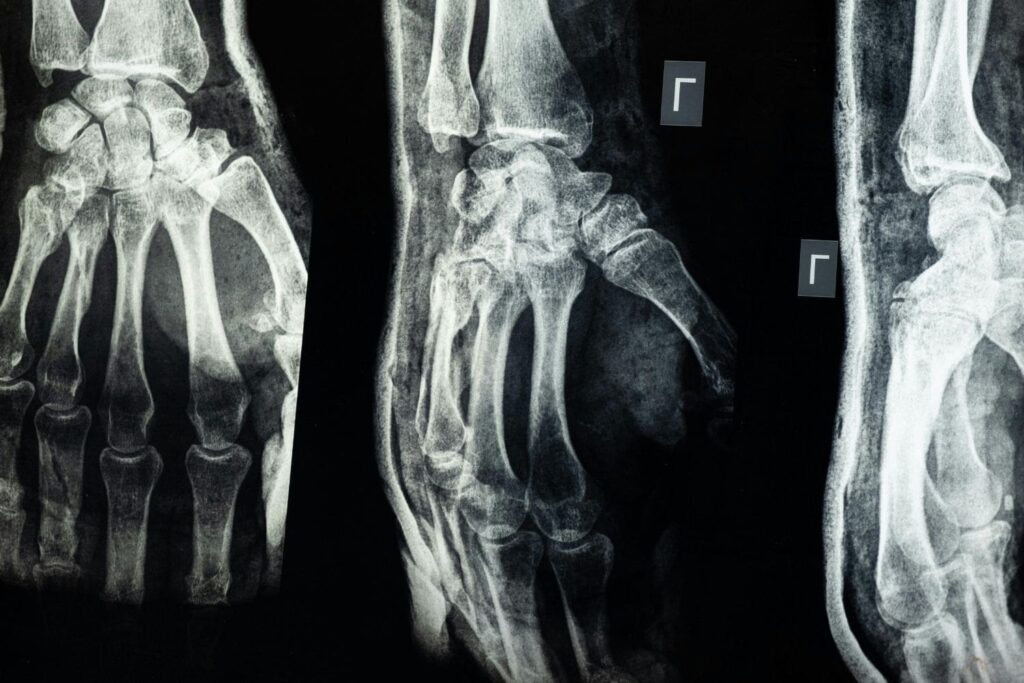Stop wasting time on unqualified PI leads
The modern personal injury law firm operates in a fiercely competitive environment. The market, valued at $57.3 billion, is experiencing slow annual growth of just 1.9%, creating a high-stakes battle for a limited pool of valuable new cases.1 For many firm owners, the daily reality is a paradox: the phone rings constantly, and web forms pour in, yet the number of truly high-value, signable cases feels disproportionately small. This flood of inquiries, if not managed by a sophisticated system, becomes a significant drain on a firm’s most valuable resources: time, money, and focus. Over 60% of law firms identify lead generation as their single biggest challenge, but this statistic only tells half the story.1 The real challenge is not just generating leads, but efficiently converting the right ones.
Many firms operate with a reactive “lead catcher” model—a disorganized process reliant on sticky notes, fragmented spreadsheets, and the memory of overworked staff.3 This approach is a direct threat to profitability. With the average cost per lead in competitive pay-per-click (PPC) campaigns reaching $159, every unqualified lead that consumes staff time represents a tangible financial loss.1 The true cost of this chaos, however, extends far beyond the marketing budget. It includes the misallocation of paralegal and attorney hours on non-viable cases, the opportunity cost of neglecting promising leads that require long-term nurturing, and the reputational damage caused by slow response times and a poor initial client experience.
This article outlines a strategic paradigm shift: moving from a passive “lead catcher” to a proactive, systematic “intake engine.” An intake engine is a deliberate, multi-stage filtration system architected to identify, qualify, nurture, and convert high-value cases while efficiently disqualifying those that do not meet the firm’s strategic criteria. In a saturated market where legal expertise can be perceived as a commodity, the client’s experience during their first contact becomes a primary competitive differentiator.5 A firm with a seamless, empathetic, and rapid intake process will consistently win clients over a competitor with a clunky, slow, and impersonal front end. By implementing the five-step framework detailed here, a PI firm can transform its intake process from a chaotic cost center into its most powerful and predictable profitability driver.
Create a non-negotiable case qualification Checklist
The foundation of a high-value intake engine is a rigorous, data-driven qualification framework. This is not merely a checklist but a strategic matrix used to assess every incoming lead against the core pillars of a viable and profitable personal injury case. This system empowers non-attorney intake staff to conduct a sophisticated initial screening, ensuring that attorneys only spend their valuable time on pre-qualified, high-potential matters. The framework rests on four non-negotiable pillars: indisputable liability, significant damages, verifiable insurance coverage, and unimpeachable case integrity.
The first pillar, clear liability, addresses the fundamental question: can fault be clearly and convincingly proven? The intake process must probe for objective evidence of negligence, such as the existence of a police report, the issuance of traffic citations, or the availability of independent witness statements or video evidence.7
The second pillar, significant damages, ensures the case is economically viable for both the client and the firm. This encompasses both quantifiable economic damages—such as medical bills, documented lost wages, and the projected cost of future care—and non-economic damages, including pain and suffering and loss of enjoyment of life.8 Intake specialists must be trained to ask questions that uncover the full, life-altering impact of the injury.7
The third pillar, insurance coverage, is the practical reality check. A case with catastrophic damages and clear liability is worthless without a source of financial recovery. The intake process must be designed to quickly identify all potential insurance policies, including the at-fault party’s liability coverage, the claimant’s own Personal Injury Protection (PIP) or health insurance, and any relevant commercial or umbrella policies.7
The final and most frequently overlooked pillar is case integrity. This pillar assesses factors that can undermine an otherwise strong case. The most critical element is the statute of limitations, which dictates the legal deadline for filing a lawsuit (for example, Florida has a 2-year statute of limitations for most personal injury cases).9 Other crucial factors include the client’s credibility, the existence of relevant pre-existing injuries, and whether the client has already provided a recorded statement to an adverse insurance carrier.7 A client who delays medical treatment, is dishonest about their medical history, or provides conflicting accounts of the incident can destroy a case’s value, making this pillar a critical test of a potential client’s credibility.11
To operationalize this framework, firms should implement a qualification matrix. This tool translates abstract legal concepts into a concrete, repeatable process for intake staff.

This matrix should be viewed as a dynamic risk-scoring tool, not a static checklist. A single red flag does not automatically disqualify a case. The true sophistication lies in training staff to understand how the pillars interact. For instance, a case with somewhat ambiguous liability might still be highly valuable if the damages are catastrophic and there is a multi-million dollar commercial insurance policy in play. Conversely, a case with perfect liability is of little value if the damages are minor and the at-fault party is uninsured. This nuanced approach transforms the intake role from simple data entry to preliminary case analysis, saving hundreds of attorney hours and focusing the firm’s resources where they will generate the highest return.
Empower your team with empathetic intake scripts
Once the qualification framework is established, the next step is to master its execution during the initial client contact. The intake call is the firm’s first and most critical opportunity to convert a qualified lead into a signed client. Potential clients are often in a state of physical pain, emotional distress, and financial anxiety.13 Their decision to hire an attorney is driven less by legal nuance and more by an immediate need for trust, reassurance, and confidence.5 Therefore, empathy is not a “soft skill” in the intake process; it is a primary conversion tool.14
An intake specialist who demonstrates genuine compassion and active listening builds immediate rapport, which significantly increases the likelihood that a prospect will choose your firm.16 Training should emphasize that a “smiling voice” can be heard over the phone and helps put distressed callers at ease.17 This human connection must be established
before diving into the methodical qualification questions. Simple, empathetic phrases like, “I’m very sorry you’re experiencing this. You’re doing the right thing by seeking advice,” can transform the entire tone of the conversation and build a strong emotional connection.14
Effective intake requires a balance between this empathetic connection and systematic data collection. A well-designed script provides the framework to achieve this balance, ensuring consistency, completeness, and compassion on every call.14 A script should not be a rigid, word-for-word monologue but a flexible guide that moves the conversation through five distinct phases:
- The welcome and empathy phase: The call begins with a professional greeting that immediately establishes credibility, followed by a sincere expression of empathy for the caller’s situation.14
- The information gathering phase: The intake specialist methodically works through the questions from the firm’s qualification matrix, gathering the essential facts about liability, damages, insurance, and case integrity.14
- The value proposition phase: After gathering information, the specialist briefly explains why the firm is well-suited to handle this specific type of case, perhaps mentioning the firm’s experience or track record in similar matters—a key factor for potential clients.5
- The process explanation phase: The specialist clearly outlines the next steps. For a qualified lead, this means scheduling a consultation with an attorney. For a lead the firm cannot help, it involves a polite and helpful declination. Managing expectations is critical to the client experience.13 An empathetic rejection script (e.g., “Based on the details you’ve shared, it appears this case falls outside our firm’s specific practice areas. We recommend contacting the local bar association, as they can provide a referral to a firm that may be a better fit.”) protects the firm’s brand and mitigates the risk of negative online reviews.5
- The call to action phase: The conversation concludes with a clear action. For qualified leads, the primary goal is to schedule the attorney consultation, ideally within 24-48 hours to maintain momentum and prevent them from calling competitors.20
To make the concept of empathy tangible and teachable, firms can use comparative examples in training and role-playing exercises.
Ultimately, the intake specialist is arguably the most important salesperson in the firm. They are not merely administrative staff; they are the front line of client acquisition. Their ability to forge a human connection in the first 60 seconds of a call can be the deciding factor in whether a seven-figure case signs with your firm or a competitor. Firms that recognize this will invest heavily in training, compensating, and empowering their intake team as the revenue-generating professionals they are.

Implement an automated follow-up system for nurturing leads
A common and costly mistake in law firm intake is assuming a lead is “dead” if they do not sign a retainer agreement immediately after the initial consultation. The reality is that many high-value potential clients are in an information-gathering phase. They may be dealing with immediate medical issues, speaking with multiple firms, or simply not yet ready to commit to the legal process.15 Without a systematic follow-up process, these valuable leads inevitably “slip through the cracks” and are lost to competitors who are more persistent.22
An automated follow-up system, often called a “nurture sequence,” is the solution to this problem. It is a pre-built series of communications sent via email and text message designed to keep the firm top-of-mind, build trust, and gently guide the prospect toward signing.21 This system acts as a force multiplier for a firm’s marketing return on investment (ROI). By converting even a small percentage of these “not right now” leads over time, the firm effectively lowers its overall client acquisition cost without spending any additional money on advertising.
A simple but highly effective multi-channel nurture sequence can be built for any qualified lead who has had a consultation but has not yet signed. The sequence should provide value and build a relationship, not just repeatedly ask for the sale.
An example of a 10-day automated sequence might look like this:
Day 1 (Immediately after consultation): An automated email from the consulting attorney.
- Subject: Following up on our conversation
- Body: “It was a pleasure speaking with you today about your situation. I’ve attached a summary of our firm’s contingency fee agreement for your review. Please don’t hesitate to call or email me directly with any questions. We are ready to begin fighting for you as soon as you are.” This provides key information and a personal touch.
Day 3: An automated email focused on social proof
- Subject: See what our past clients have to say
- Body: This email would feature two or three powerful client testimonials, ideally from cases similar to the prospect’s. This directly addresses a key factor in the hiring decision: reputation and a winning track record.5
Day 5: An automated text message (SMS)
- Body: “Hi [Prospect Name], this is [Paralegal Name] from [Law Firm Name]. Just checking in to see if you had any questions after your consultation with [Attorney Name]. We’re here to help.” Text messages have extremely high open rates and feel more personal than email.21
Day 7: An automated email that provides educational value
- Subject: 3 common mistakes to avoid after an accident
- Body: This email links to a helpful blog post or video on the firm’s website. It positions the firm as a helpful authority and provides value without a hard sell, building trust.2
Day 10: A final automated email creating a sense of urgency
- Subject: A quick note about your case
- Body: “Hi [Prospect Name], I wanted to follow up one last time. As we discussed, evidence can disappear and memories can fade, so it’s important to begin the investigation process as soon as possible. Please let us know if you would like to move forward.”
For leads who are still undecided after this initial sequence, they can be moved into a long-term nurturing campaign, such as a monthly email newsletter.20 This newsletter should continue to provide value with firm news, case results, and helpful legal information, ensuring that when the prospect is finally ready to hire an attorney, your firm is the one they remember and trust.
Furthermore, the engagement data from these nurture sequences can become a powerful lead-scoring tool. A sophisticated legal CRM can track which prospects open emails, click on links to case studies, or watch testimonial videos.22 This data provides invaluable insight into a prospect’s level of interest and intent. A lead who repeatedly engages with content about high-value cases like traumatic brain injuries is signaling a much higher potential value. This allows the firm to segment its long-term leads and periodically assign staff to make personal follow-up calls to the most engaged, highest-potential prospects, allocating firm resources with surgical precision.
Leverage technology: the power of a legal CRM
A modern, high-performance intake process cannot run on manual systems. As a firm’s lead volume grows beyond 30-50 inquiries per month, relying on spreadsheets, paper notes, and email chains becomes untenable.23 This manual approach is not only inefficient and prone to human error but also provides zero actionable data for strategic decision-making.3 Leads are inevitably lost, follow-up is inconsistent, and firm leadership has no clear visibility into the health of its client acquisition pipeline.
The solution is a legal client relationship management (CRM) software. A CRM is the central nervous system of the intake engine, acting as the “single source of truth” for all lead and client data from the first point of contact through the final case resolution.3 It transforms intake from a collection of chaotic, disconnected tasks into a standardized, measurable, and scalable process. The very act of implementing a CRM forces a firm to critically examine and define its intake stages, scripts, and follow-up protocols, creating a repeatable system that can be managed and improved over time.
A generic CRM is not sufficient. A PI firm requires a legal-specific CRM with features designed to automate and streamline the unique workflow of case intake.
The data generated by a well-implemented CRM becomes a strategic asset for the entire firm. By analyzing the number of leads in the pipeline, historical conversion rates, and the average fee per case, a firm owner can create surprisingly accurate revenue forecasts. This data-driven foresight enables more strategic decisions about cash flow management, marketing budgets, and, most importantly, when to hire new attorneys and support staff to handle the projected caseload. This transforms the CRM from a simple operational tool into a powerful engine for predictable, sustainable growth.

Master the consultation: turning a qualified lead into a signed client
The attorney consultation is the final and most important stage of the intake process. It is the conversion point where a highly qualified, nurtured lead becomes a signed client. While the intake team has done the heavy lifting of screening and preparation, the attorney’s performance in this meeting ultimately determines the outcome. A masterfully conducted consultation is not about “selling” legal services; it is about systematically reducing the client’s perceived risk and establishing the attorney as a credible, authoritative guide who can lead them through the complexities of the legal system. The process begins before the client ever walks through the door or joins the video call. The attorney must leverage the CRM to thoroughly review all the information gathered by the intake team.30 Asking a client to repeat their entire story from the beginning signals disorganization and a lack of respect for their time. A prepared attorney enters the conversation already knowing the key facts about the incident, the injuries, and the insurance situation. This allows the consultation to move beyond basic fact-finding and into higher-level legal strategy and trust-building.10 A consultation structured for conversion typically follows five phases:- Re-establish rapport and empathy: The attorney should begin not with legal questions, but with a human connection. Acknowledging the client’s difficult situation and referencing a specific detail from the intake notes (“I understand from my team that you’ve been dealing with significant back pain since the collision…”) demonstrates that the attorney is prepared and genuinely cares.13
- Deepen the fact-finding: The attorney should ask clarifying, strategic questions that build on the intake information. This is an opportunity to showcase expertise by exploring legal nuances the intake team would not know to ask about, further solidifying the attorney’s credibility.
- Educate the client and set expectations: This is the most critical phase for building trust. The attorney must clearly and simply explain the legal process, potential timelines (which can be months or even years), the client’s role and responsibilities (such as attending all medical appointments), and the range of potential outcomes.12 It is vital to avoid making promises or guaranteeing a specific result.31 This is also the time to transparently explain the contingency fee agreement and any associated costs, which helps alleviate one of the biggest sources of client anxiety.5
- Articulate the firm’s unique value: Having educated the client, the attorney must now explain why their firm is the right choice. This is where they connect the client’s specific needs to the firm’s strengths, leveraging its experience, track record with similar cases, and client-centered communication philosophy—the factors that clients value most when making a hiring decision.5
- Ask for the business: The consultation should end with a clear, confident request to move forward. A simple, direct statement like, “Based on our conversation, I am confident that we can help you with this. Are you ready to have us get started on your case today?” removes ambiguity and prompts a decision.
From high volume to high value
The challenge facing modern personal injury firms is not a lack of potential clients, but a lack of a systematic process to identify, engage, and convert the cases that truly drive profitability. Relying on an outdated, reactive intake model is a direct path to wasted marketing dollars, inefficient use of staff, and stagnant growth. The transition from a high-volume, low-efficiency operation to a high-value, high-efficiency practice is achieved by architecting and implementing a comprehensive intake engine.
This transformation is a five-step journey. It begins with establishing a rigorous Qualification Framework to ensure that only viable, high-potential cases enter the pipeline. It is executed by an empowered intake team using empathetic scripts that build trust and rapport from the very first call. It maximizes the value of every lead through automated follow-up systems that nurture prospects who are not ready to sign immediately. The entire system is powered and scaled by a legal CRM, which provides the automation, organization, and data needed for strategic management. Finally, it culminates in a masterfully conducted attorney consultation, where a prepared attorney converts a qualified lead into a signed client by reducing risk and establishing themselves as a trusted guide.
These are not five separate tactics but a single, integrated system where each component reinforces the others. Implementing this system is one of the highest-return investments a firm owner can make. The results are a stronger portfolio of cases, a lower client acquisition cost, enhanced staff productivity, more predictable revenue streams, and a decisive competitive advantage in a crowded legal marketplace.
Ready to build a PI intake system that signs the cases you actually want? Experience the Firm Heartbeat and begin your firm’s transformation today.

Frequently asked questions
What are the most important criteria for qualifying a personal injury lead?
The foundation of a profitable PI intake process is a qualification framework built on four non-negotiable pillars. This allows your team to assess a case’s viability before it consumes valuable attorney time. The four pillars are:
- Clear liability: Is there objective evidence proving fault, such as a police report, traffic citations, or video evidence?
- Significant damages: Are the injuries and financial losses (medical bills, lost wages) substantial enough to make the case economically viable for both the client and the firm?
- Verifiable insurance: Is there an identifiable source of financial recovery, such as the at-fault party’s liability coverage or other commercial or personal policies?
- Case integrity: Are there red flags that could undermine the case, such as a looming statute of limitations, client credibility issues, or damaging pre-existing injuries?
Why are empathetic scripts so important for PI intake calls?
Empathy is a primary conversion tool, not just a soft skill. Potential PI clients are in a state of physical pain, emotional distress, and financial anxiety. Their decision to hire is based more on trust and confidence than on legal details. An intake specialist using an empathetic script builds immediate rapport, making the caller feel heard and understood. This emotional connection significantly increases the chances they will choose your firm over a competitor. A well-designed script provides a consistent framework to balance genuine compassion with the systematic collection of critical case information.
What is the best way to handle PI leads who don’t sign up immediately?
Many high-value leads are simply not ready to commit during the first contact. To avoid losing them, you must implement an automated follow-up system, often called a “nurture sequence.” This is a pre-built series of emails and text messages sent over several days that keeps your firm top-of-mind. The goal is to build trust by providing value—such as client testimonials, educational blog posts, and helpful check-ins—rather than just pressuring them to sign. This system converts leads that would otherwise be lost, effectively lowering your overall client acquisition cost.
How does a legal CRM improve the client intake process?
A legal client relationship management (CRM) software is the central nervous system of a modern intake engine. It solves the chaos of manual systems like spreadsheets and paper notes, which are prone to error and lead to lost opportunities. A legal CRM automates workflows, standardizes your intake process, and ensures consistent follow-up for every lead. Most importantly, it provides a “single source of truth” for all lead data, allowing you to track key metrics, analyze conversion rates, and make accurate revenue forecasts for more strategic business decisions.
How can an attorney conduct a better initial consultation to sign more cases?
The attorney consultation is the final conversion point. To master it, the attorney must move beyond just “selling” and focus on systematically reducing the client’s fear and perceived risk. This involves five phases:
- Prepare: Thoroughly review all intake notes in the CRM beforehand to avoid making the client repeat their story.
- Connect: Start with empathy and build rapport before diving into legal questions.
- Educate: Clearly explain the legal process, timelines, and the contingency fee agreement to set realistic expectations and build trust.
- Articulate value: Explain why your firm is the right choice for their specific situation, referencing your experience and track record.
- Ask for the business: End the meeting with a clear, confident request to get started on their case.
Sources
- How to Get Personal Injury Leads: 2025 Edition
- Top 5 Ideas for Personal Injury Lead Generation
- CRM for Law Firms: How to Improve Client Intake and Retention
- Reasons Why Your Law Firm Needs Client Intake Software for Lawyers
- Hiring a Personal Injury Lawyer: Key Factors
- Starting new personal injury firm or buying a small practice out? How do you even compete for all of the leads against MM or bigger dogs? : r/LawFirm
- Personal Injury Case Checklist in Tampa, Florida
- Personal Injury Case Checklist
- www.lorenzoandlorenzo.com
- How to Prepare for Your Consultation With a Personal Injury Lawyer
- Personal Injury Case Checklist
- What to Expect in a Personal Injury Lawyer Consultation
- The Art of Client Communication and Management in Personal Injury Practice: A Guide for Attorneys
- Legal Intake That Converts: Proven Call Scripts & Triage Rules for Law Firms
- How to Increase Case Conversions for Personal Injury Attorneys
- Legal Funding Intake Checklist & Call Cheatsheet for Your Team
- Ten Things to Include in Your Client Intake Process
- Customizing Legal Intake Scripts
- Best Client Intake Practices for Law Firms [Form Examples]
- The Six Elements of a Crazy Effective Intake Script
- Automated Follow-Ups: Convert More Law Firm Leads to Clients
- Guide to Personal Injury Lead Generation in 2025
- How To Manage Leads And Convert Prospects Into Paying Clients
- 9 Reasons Why Legal CRM Takes Your Law Firm To The Next Level
- Legal Workflow Automation Software for Client Intake and Communication
- Legal Client Relationship Management (CRM) Software
- PracticePanther: Law Practice Management Software
- Transform Client Intake with Legal Practice CRM for Lawyers
- 6 Tips to Help You Find the Right Personal Injury Attorney













